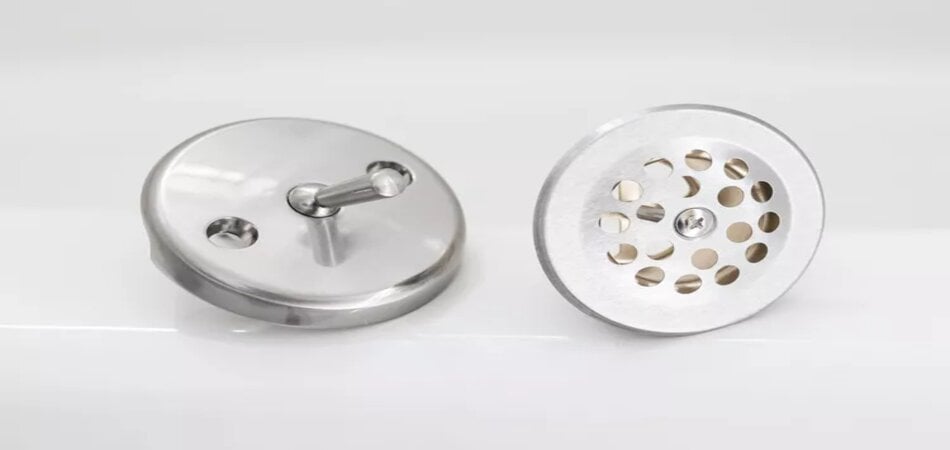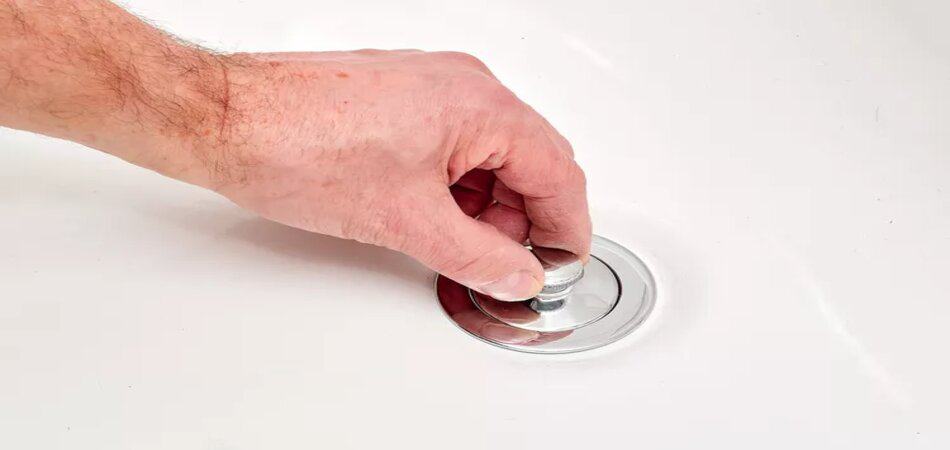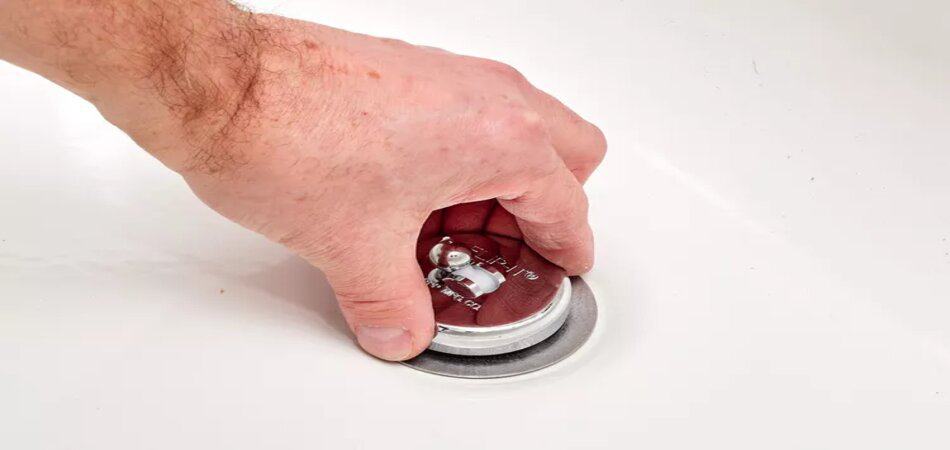Unless the water slowly seeps away due to a damaged bathtub drain stopper, unwinding in a hot, relaxing bubble bath is the ideal way to end the day. However, a drain stopper that refuses to move or fails to keep water efficiently hinders the entire bathing process. Understanding the type of stopper in your bathtub drain is crucial. It will determine how you disassemble and repair the obstruction.
An everyday item, a bathtub stopper retains water within the tub and impedes its discharge. Although all bathtub drain stoppers are intended to perform the same function, each has minor variations in design and composition.
Bathtub stoppers have a lengthy lifespan. They are susceptible to deterioration, clogging, or malfunction over time. If you encounter problems alone, you need not be concerned about finding a plumber or incurring an exorbitant fee. Try to repair it on your own. This comprehensive guide will assist you in fixing the bathtub drain stopper.
How to Fix a Bathtub Drain Stopper?
Fixing a Trip Lever with Plunger

The location of the trip mechanism on a bathtub can be identified by checking the overflow plate. The plat is positioned vertically in front of the tub near the faucet. It can be flipped up or down to reveal or conceal the drain. The drain stopper that is not visible is the type with a plunger, which is also known as a lift pail stopper. A simple strainer will be visible and positioned above the outflow.
The obstruction impeding water flow is a weight known as a plunger, which oscillates within the tub’s overflow conduit. When the drain is closed by raising the lever, the plunger linked to the lever descends to obstruct the drainpipe. Since the plunger is porous with a perforated center, water can still pass through the overflow tube if the container becomes full. By lowering the lever, the plunger is raised, and the drainpipe is unclogged, allowing the tub to drain.
Because every part is concealed, trip-lever stoppers with plungers are more difficult to repair. The overflow plate must be removed to extract the assembly, which makes troubleshooting or resolving problems impossible.
Troubleshooting the Stopper

Challenges with this particular variety of stoppers may manifest as a jammed plunger, an unresponsive stopper lever, or a covered drain. The overflow plate must be unscrewed from the container using a screwdriver to service this stopper. Showering the tub and drain with a towel protects if the fasteners fall during removal. The plunger assembly can be extracted through the hole created after removing the cover. Some things to try involve;
- Cleaning:
If the lever appears gunky, clean it. The buildup may impede the object’s proper motion when raised or lowered. Soaking in vinegar may help remove the accumulation.
- Linkage inspection:
The linkage connecting the plunger to the lever should then be examined. Loose, contorted, or intertwined connections can disrupt the system’s functioning. If the connections are compromised, the entire assembly may need to be replaced. Straighten them if they are twisted or otherwise disordered.
- Plunger inspection:
Additionally, inspect the plunger for damage, such as corrosion, that may impede its fluid operation. If these defects are discovered, replace the assembly.
- Adjustments:
Linkage of an incorrect length is another possible concern that may need adjustments. This prevents the plunger from completely depressing into the overflow tube. It permits water to run through the drainpipe. Utilizing pliers, rotate the change nut counterclockwise.
Moreover, reduce its length or enlarge it for improved alignment. Then, reinstall the assembly, close the drain, and fill the container. However, it is necessary to test various lengths for proper positioning.
- Broken linkage:
Disconnection or breakage of the linkage may occur at times. It may be necessary to use a wire equipped with a hook or a comparable instrument to extract the plunger from the overflow tube. Generally, this requires the replacement of the assembly.
Reinstall the assembly through the overflow plate’s hole opposite from where you disassembled it once the necessary repairs have been completed. Reinstall the plate using screws. Up and down, rotate the trip lever to ensure that it can be moved freely. Plunge water into the tub while the stopper is closed to verify its functionality. Try further modifications or substitute the assembly.
Using a Rocker to Repair a Trip Lever
A trip mechanism on the overflow plate also opens and closes the drain on this bathtub drain stopper. The stopper in the tub drain is visible and actuates vertically, hence the common nomenclature “pop-up stopper.” The trip lever and stopper are joined by a spring-loaded rocker arm that extends through the waste pipe. The stopper is opened and closed in response to the raised or lowered trip lever.
Troubleshooting the Stopper
The primary issue that may arise with this particular type is that the stopper fails to open, becoming fixed in the closed state. This may occur if the connecting rod is not adjusted deformed, or the spring is obstructed with grime and hair. This stopper can be removed by unscrewing and removing the overflow cover plate. It is also removed by pulling the assembly through the aperture. The stopper must be detached with the rocker arm and spring in specific models designed by the water stopper manufacturer.
Identify any hair, detergent residue, or other debris removable from the spring. Additionally, extending the rocker arm through change may improve its performance. Several trials of the change may be required to achieve the desired length.
After repairing the item, reinsert it opposite to the one you removed. It is suited to replace the overflow drain gasket while removing the cover plate. Verify that the disposal is operational by conducting a test. If the problem persists, attempt to replace the assembly.
Fixing Stoppers Without a Linkage Assembly
The alternative overarching kind of bathtub drain stoppers comprises designs lacking a linkage assembly in the overflow drain. Instead of a trip lever, they are controlled via the plunger affixed to the drain. These stoppers are secured with set screws. They may detach or disengage from the drain, allowing you to check and repair them.
Some bathtub stoppers have manufacturer logos or labels imprinted on them. It gives you valuable info for determining the type. However, the following forms of stoppers fall under this category:
- Flip type:
Open and close flip-style drains by manipulating a mechanism located atop the drain in a reciprocating motion. Rubber O-rings apply pressure to the drain when it is closed to secure it. Invert the tube in the opposite direction to release and discharge the O-rings. Compared to nature, the PresFlo is operated by pressing a flat part to seal or open it.
- Toe touch:
Rubber seal toe touch stoppers are a simple alternative that prevents water from entering. They can be operated with the toe, eliminating the need to stoop. You press the stopper down with your toe, and reapplying pressure causes it to reopen.
- Push-and-pull stoppers:
These stoppers permit or restrict drainage by being manipulated vertically and laterally. Some comparable models feature lift-and-turn stoppers, in which the lid is closed by turning it. Additionally, they are spring-loaded and feature a silicone seal to prevent water ingress.
Troubleshooting a Push/Pull Stopper

These stoppers are secured with a set screw that must be removed before stopper removal. It may be necessary to unscrew a cover before locating the set screw. Sometimes, the problem may be as simple as inserting the setscrew. Either the closure is too snug or loose, and it will fail to secure correctly. An initial change of the fastener may resolve the issue.
If the issue is not with the screw, unscrew the stopper and the setscrew to remove it. The closure must be removed from its post. Removing and replacing the rubber seal may be necessary if grime cannot be removed. Remove hair and other material from the drain as the obstruction is removed to unclog the pipe.
Troubleshooting a Flip-Type Stopper

Flip-type stoppers fit and remove from the drain easily, requiring neither tools nor screws for installation. To clean or inspect the stopper, operate the lever oblique to liberate the O-ring, then extract it from the drain. This enables a cleaning and inspection of the rubber seal for any indications of deterioration.
Replace the stopper’s rubber seal with a new one according to the replacement seal’s instructions. If it is damaged, simply cleaning the stopper does not improve its ability to seal. In general, they are on and off. Proceed to close the drain by reinstalling the rubber seal into the drain and activating the switch. By adding water to the tub, check that the stopper obstructs the outflow.
If the stopper continues to malfunction, the entire unit may need to be replaced. Screws and tools are unnecessary for the installation of the new stopper. However, they can be inserted into the drain.
Troubleshooting a Toe-Touch Stopper

Soap residue and debris can cause the rubber seal on a toe-touch stopper to become adhesive or completely wear out. To replace or clean the toe-touch stopper, unscrew the lid by drawing the stopper upward and twisting it off. If the rubber seal is adhesive, a light cleaning may be helpful. Remove the rubber barrier by interfering with it if it appears deformed, shredded, or damaged. Apply an alternative seal.
If the shaft is the source of the issue, it may be necessary to replace it. It is necessary to remove the bolt that is fastening the shaft in position. Using screws, install the new one. After the repairs have been completed, reattach the lid and try the stopper by sealing it and filling the tub.
Summary
A bathtub drain stopper can be repaired with the proper equipment and methods. You can troubleshoot and repair common issues. These issues include blockages, leakage, and malfunctioning mechanisms, which are distinguished by the stopper type and comprehending its mechanism. Taking proactive measures to maintain your bathtub drain stopper through routine cleaning, change, or replacement can enhance its functionality and extend its lifecycle.
When performing repairs, remember to never compromise on safety and to adhere to the instructions provided by the bathroom accessories manufacturers. You can restore the drainage system of your bathtub with diligence and perseverance. So, it improves daily comfort and convenience.

